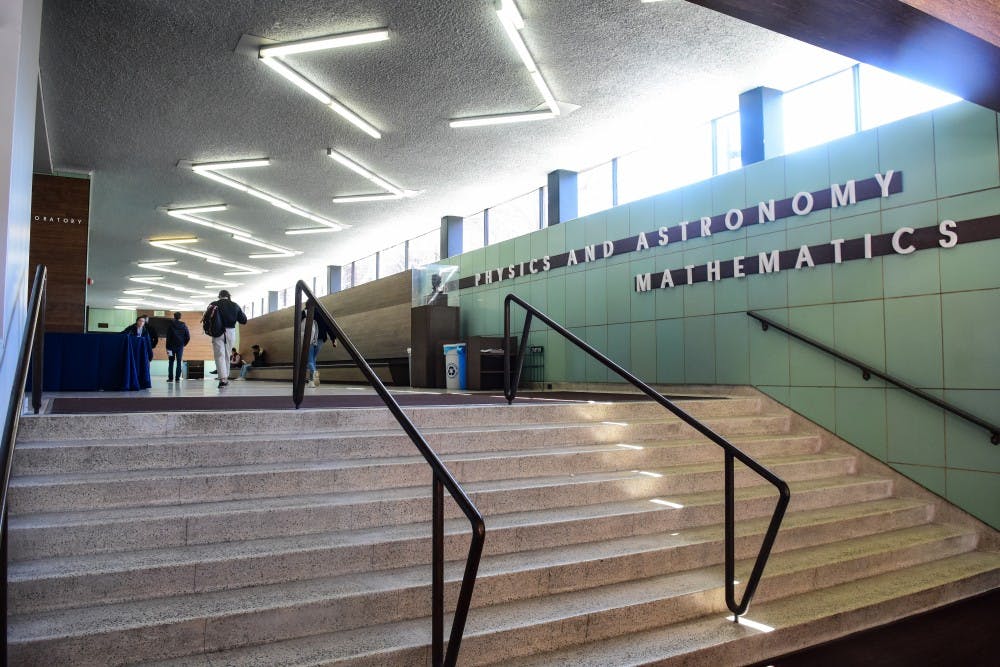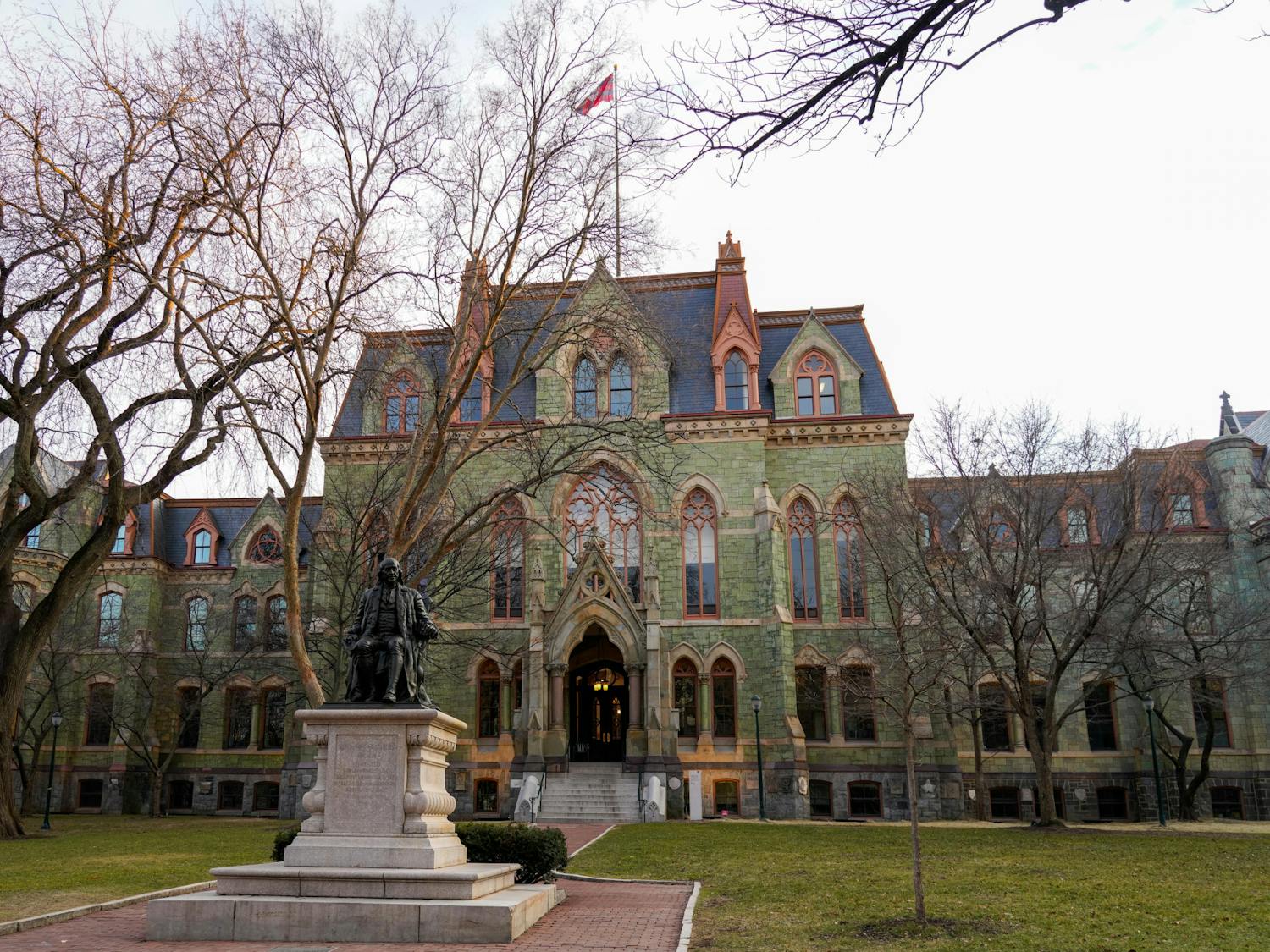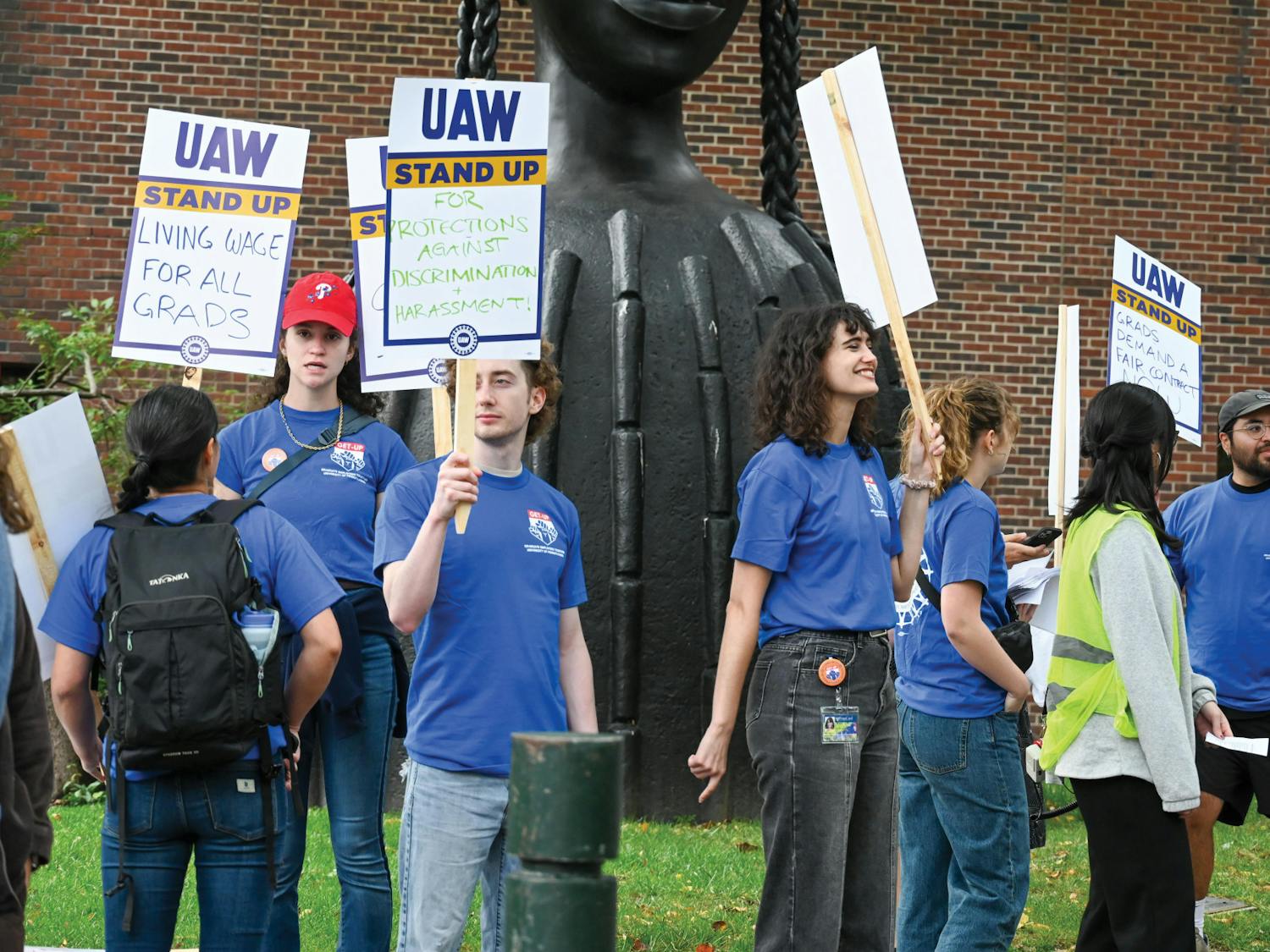After a series of damaging leaks in David Rittenhouse Laboratory earlier this semester, students and faculty petitioned Penn to fix the building's poor working conditions. However, this isn't the first time attempts have been made to improve DRL — a plan to renovate the building was scrapped in 2013 after administrators determined there was not enough funding.
The discussion surrounding DRL's facilities escalated last month when a petition calling on the University to provide better work conditions garnered more than 150 signatures. The petition followed a series of floods caused by burst pipes that displaced dozens of graduate students who work in DRL. Shortly after the petition was sent, the administration removed the remaining problematic piping in the roof and began restorative cleaning throughout the building. But students said the long-term plans were "vague" and called on the University to prioritize a complete renovation of DRL, which is located at 33rd and Walnut streets and houses the Physics and Math departments.
Six years prior, in 2013, the School of Arts and Sciences hired architects to draw up possible renovation plans for the building, according to multiple professors. The renovation ideas ranged from changing the signage to reconfiguring the layout of offices, Physics professor Gene Mele added that the architects also made plans to remodel the infrastructure, including the air handling, plumbing, and heating.
One of the plans also proposed building a six-story tower above the current DRL building, Physics Graduate Chair Joshua Klein said.
The plans ranged from $90 to $150 million each and would have taken at least two years to become a detailed proposal, Math Department Chair Jerry Kazdan said. None of the renovation plans took off due to budget constraints.
"Once the price tag came in, my impression was that it was not thought possible to do any of them at that time," Physics Department Chair Mark Trodden said.
On April 5, 1950 College graduate Roy Vagelos and his wife Diana Vagelos donated $50 million to SAS to fund the construction of a new science building focused on energy research. The building, which will be named after Roy and Diana Vagelos, is the biggest donation in SAS history. The building will be located right next to DRL and will displace the High Bay area, Klein said.
Vagelos' record gift was the latest in the sums donated to Penn President Amy Gutmann's Power of Penn Campaign that funded more than half a dozen building projects, such as Tangen Hall for student entrepreneurship, a new pavilion at the Graduate School of Education, and New College House West.
RELATED:
'Power of Penn' campaign plans to bring eight new buildings to campus
Gutmann's third campus renovation plan is on track to finish by 2022

One of the women's bathrooms in DRL.
In 2013, DRL faculty met with the architects multiple times to talk about faculty needs for improvements to the building and what could be feasibly implemented. Klein said in a meeting with architects, faculty expressed a desire for more common areas in the building.
Both the Math and Physics departments currently have small lounges and break rooms, but they are not centrally located and do not serve as good places for faculty and students to meet each other, Klein said. Even though the lobby is a common area, it is completely walled off from Shoemaker Green, which is the green space in front of DRL, despite being right in front of it.

At least two offices on the fourth floor of DRL have sustained water damage in the past 18 months. (Photos from Mariana Carrillo Gonzalez)
In addition to spatial changes, the biggest concerns among faculty were the heating, ventilation, and air conditioning systems, Klein said.
“We lose our research time when we turn off the computers because they are too hot, [or] when people’s fingers are too cold to type,” Klein said. “There’s a lot of energy waste in the building because people are running space heaters even in the summer because the air conditioning is up to high.”
Klein said he is not sure whether some DRL design flaws could be fixed by the renovations, adding that DRL was built in a time when physics was considered "quasi-military."
“The idea was that you shouldn’t let anyone see what you were doing, because it might be secret and important, and might have national security interests involved. So it was built intentionally to hide everything," Klein said.

Several abandoned pipes in the building were filled with pressurized chilled water, which caused them to burst. (Photos from Mariana Carrillo Gonzalez)
Gladney, who represented the department in discussions of planning for major renovations, said the renovation planning process did not produce a complete design for a renovated building, instead producing what architects refer to as massing drawings.
"To produce actual renovation plans would have required considerably more time, expense, and some level of commitment to meet the expected cost," Gladney said.
Raising the necessary funds now for the large-scale renovations would require significant support from the University and help searching for donors, Kazdan said. The federal government is another potential source of funding, through organizations like the National Science Foundation.
Lane added that University Facilities and SAS are prioritizing HVAC renovations in DRL for the next Facilities Renewal Funds funding cycle, Lane said. The sources of funds for known current and future renovations of DRL are from SAS and from the University Facilities Renewal Funds.









